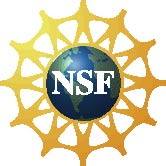Gelechioidea-Whole Body Mounts
The following method for dissecting
whole bodies of pinned specimens has been developed by R. Brown for comparative
studies of non-traditional morphological structures. Data labels are removed
from a pinned specimen and placed on a second pin with an additional label providing
a unique preparation number. The left pair of wings is removed from the pinned
specimen and retained for dry mounting, and the right pair of wings is used
for preparing a wing venation slide. The remainder of the specimen is placed
in 10% KOH while still on the pin. After the body is cleared overnight, the
head (with antennae, labial palpi, and proboscis detached), thoracic segments,
abdomen, and genitalia are separated in 20% ETOH and denuded. The remainder
of the procedure for staining and dehydrating is the same as that used for genitalia.
Body parts are mounted in Euparal on two slides with matching numbers followed
by "A" and "B." The "A" slide includes head capsule and appendages, prothorax and mesothorax under one coverslip and the metathorax, abdomen, and genitalia under a second coverslip of the same slide. The "B" slide includes the intact, scaled fore- and hindwings under one coverslip that is glued at the margins with fingernail polish, and the denuded and stained set of wings in euparal under a second coverslip.
Examples of structures revealed with whole body mounts
Spinose setae of tarsi
Head and sitophore
Labial palpi




